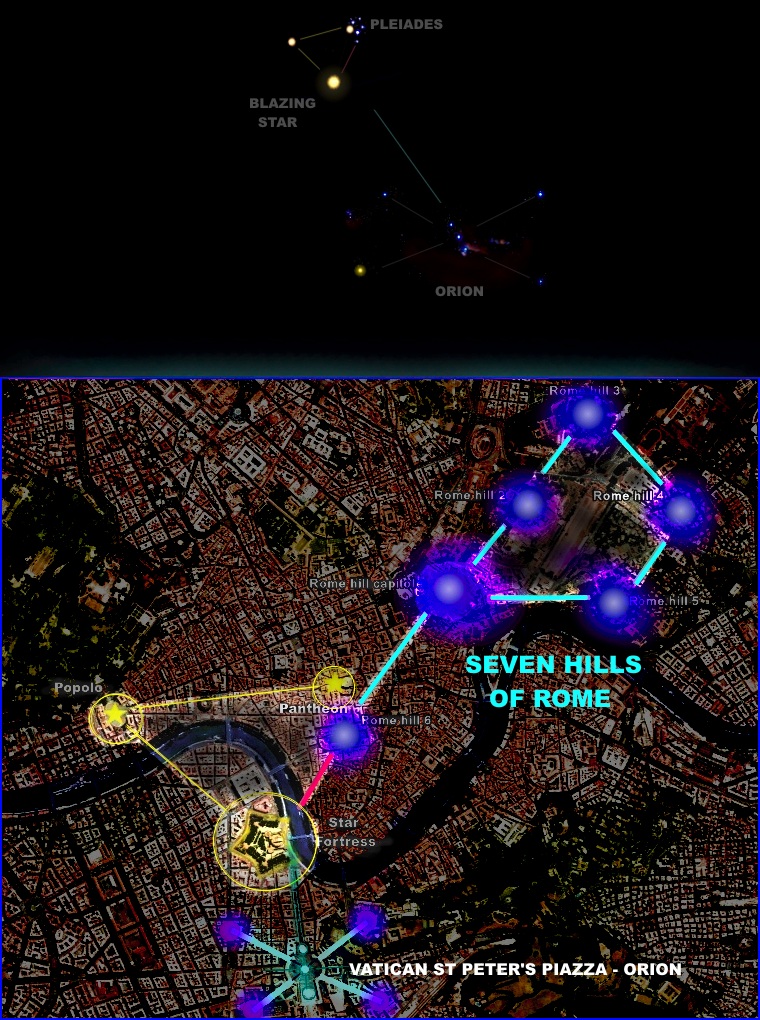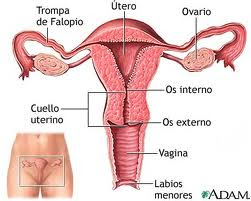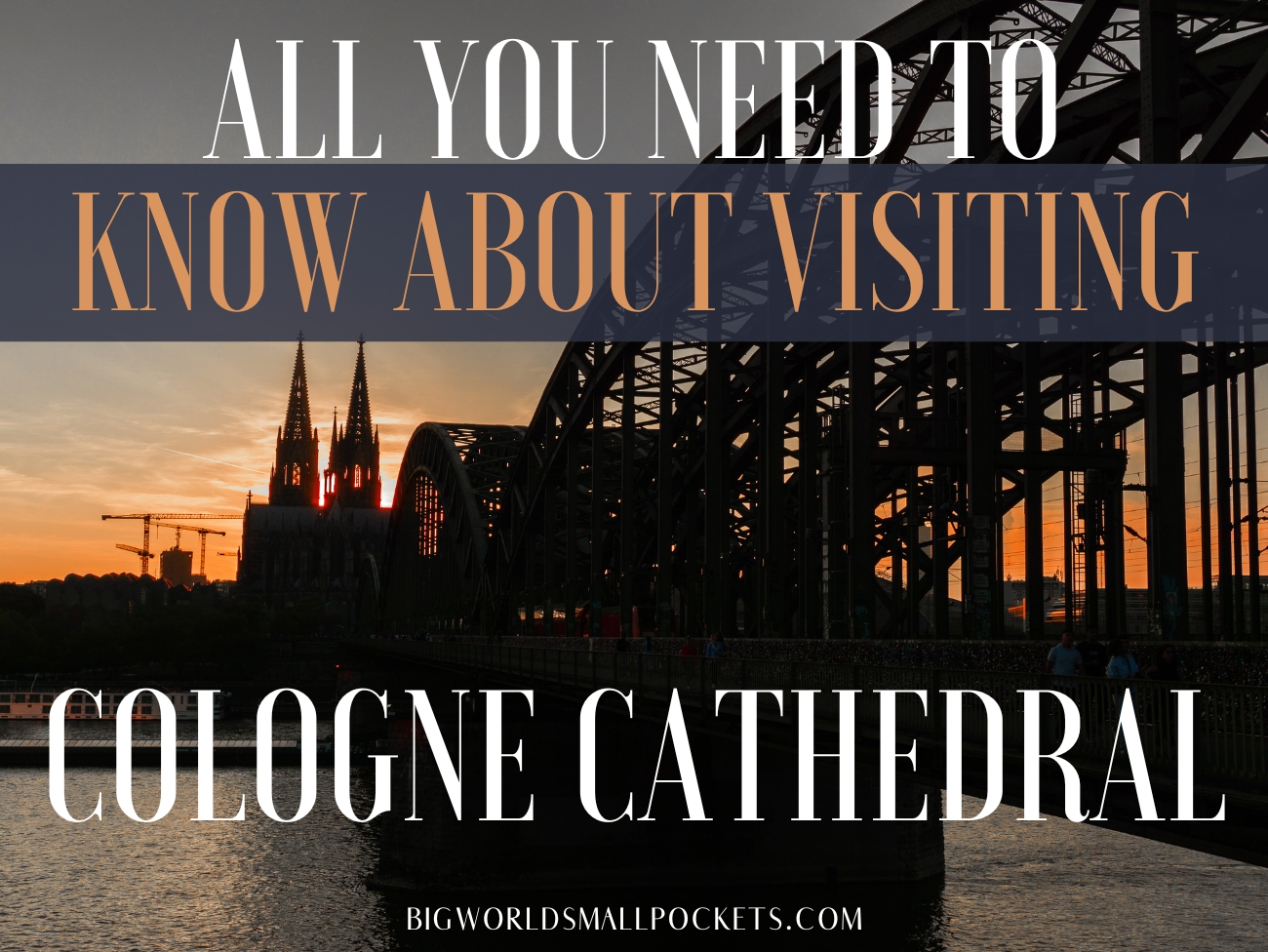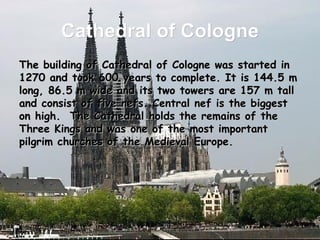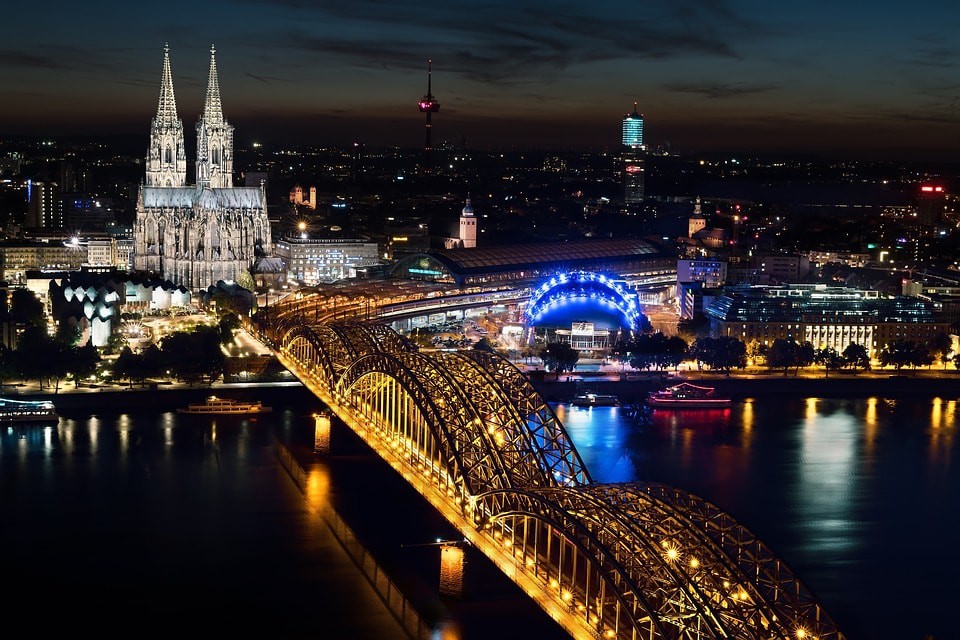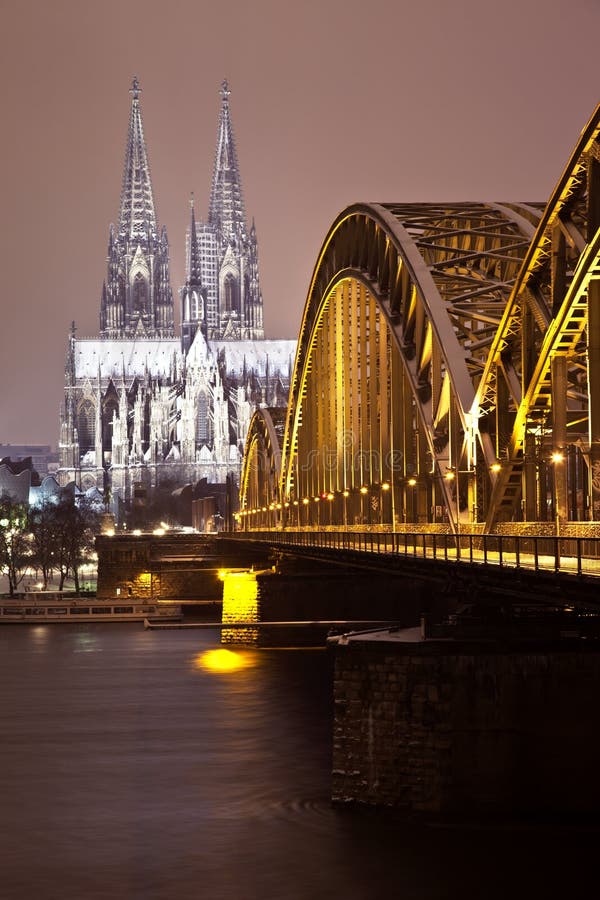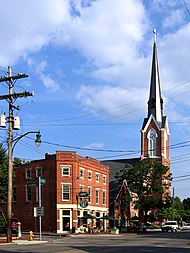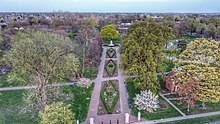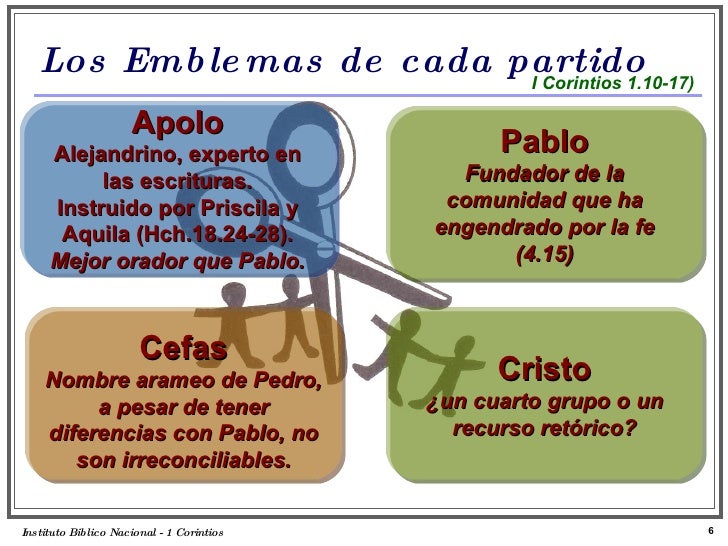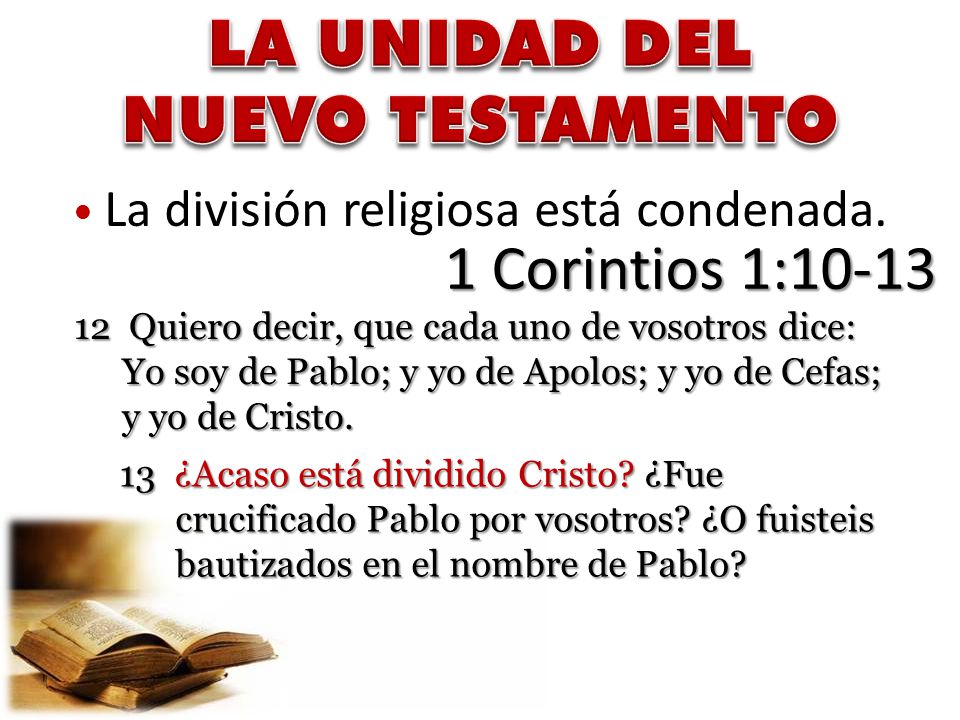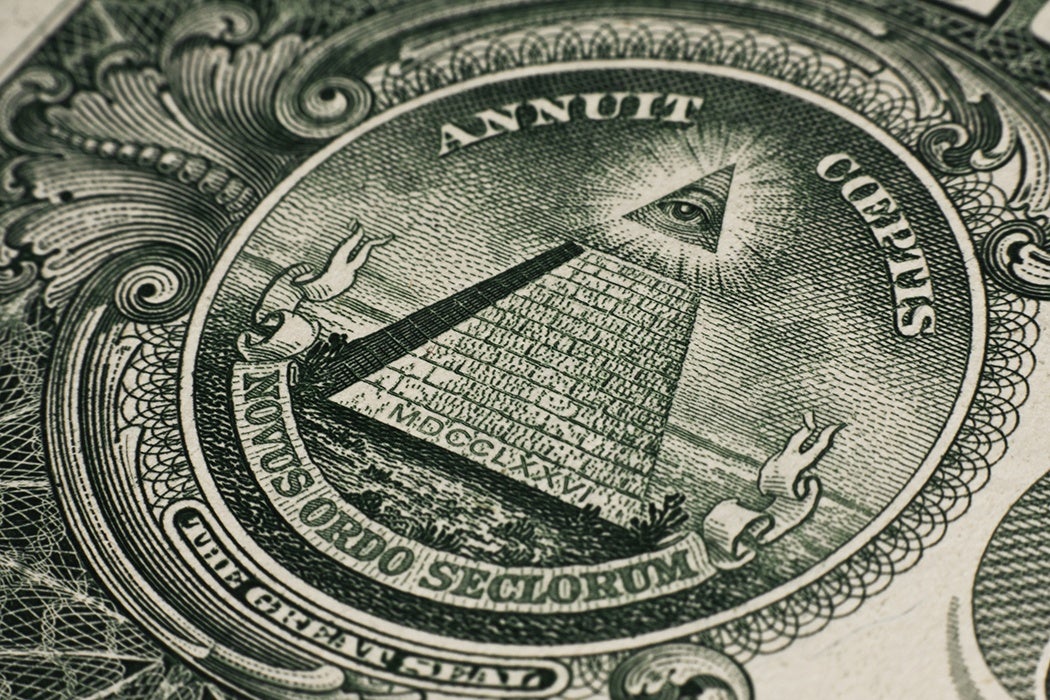|
|
General: ¿QUE NOS QUIERE DECIR YHWH DETRAS DE LOS 3 REYES MAGOS? (NEXO ORION)
Escolher outro painel de mensagens |
|
|
SE DA EL MISMO PATRON DEL LIBRO DE MARCOS 9, LUCAS 9 Y MATEO 16 Y 18 EN EL MARCO A CESAREA DE FILIPO, AL PIE DEL MONTE HERMON (MERIDIANO 33 DE PARIS Y PARALELO 33), EN EL CONTEXTO A LA TRANSFIGURACION DEL NEXO CON JUAN MARCOS (UN NIÑO), EN EL MISMO CONTEXTO EN HECHOS 12
Mateo 16
11. ¿Cómo es que no entendéis que no fue por el pan que os dije que os guardaseis de la levadura de los fariseos y de los saduceos?
12. Entonces entendieron que no les había dicho que se guardasen de la levadura del pan, sino de la doctrina de los fariseos y de los saduceos.
13. Viniendo Jesús a la región de Cesarea de Filipo, preguntó a sus discípulos, diciendo: ¿Quién dicen los hombres que es el Hijo del Hombre?
14. Ellos dijeron: Unos, Juan el Bautista; otros, Elías; y otros, Jeremías, o alguno de los profetas.
15. El les dijo: Y vosotros, ¿quién decís que soy yo?
16. Respondiendo Simón Pedro, dijo: Tú eres el Cristo, el Hijo del Dios viviente.
17. Entonces le respondió Jesús: Bienaventurado eres, Simón, hijo de Jonás, porque no te lo reveló carne ni sangre, sino mi Padre que está en los cielos.
18. Y yo también te digo, que tú eres Pedro, y sobre esta roca edificaré mi iglesia; y las puertas del Hades no prevalecerán contra ella.
16:19 Y a ti te daré las llaves del reino de los cielos; y todo lo que atares en la tierra será atado en los cielos; y todo lo que desatares en la tierra será desatado en los cielos.
Job 38:31: ¿Podrás tú atar los lazos de las Pléyades,
O desatarás las ligaduras de Orión?
Mateo 17
1. Seis días después, Jesús tomó a Pedro, a Jacobo y a Juan su hermano, y los llevó aparte a un monte alto; (ESTA RELACIONADO CON JUAN MARCOS, EN EL CONTEXTO A HECHOS 12. LA TRANSFIGURACION TIENE FUERTE RELACION CON ORION.)
2. y se transfiguró delante de ellos, y resplandeció su rostro como el sol, y sus vestidos se hicieron blancos como la luz.
3. Y he aquí les aparecieron Moisés y Elías, hablando con él.
4. Entonces Pedro dijo a Jesús: Señor, bueno es para nosotros que estemos aquí; si quieres, hagamos aquí tres enramadas: una para ti, otra para Moisés, y otra para Elías.
5. Mientras él aún hablaba, una nube de luz los cubrió; y he aquí una voz desde la nube, que decía: Este es mi Hijo amado, en quien tengo complacencia; a él oíd.
6. Al oír esto los discípulos, se postraron sobre sus rostros, y tuvieron gran temor.
3. Deuteronomio 4:48: Desde Aroer, que está junto a la ribera del arroyo de Arnón, hasta el monte de Sion, que es Hermón;
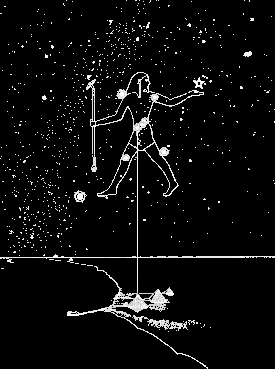
|
Mateo 18
1. En aquel tiempo los discípulos vinieron a Jesús, diciendo: ¿Quién es el mayor en el reino de los cielos?
2. Y llamando Jesús a un niño, lo puso en medio de ellos,
3. y dijo: De cierto os digo, que si no os volvéis y os hacéis como niños, no entraréis en el reino de los cielos.
4. Así que, cualquiera que se humille como este niño, ése es el mayor en el reino de los cielos.
5. Y cualquiera que reciba en mi nombre a un niño como este, a mí me recibe. (NOTEN QUE CRISTO ESTA AFIRMANDO QUE QUIEN RECIBE A ESE NIÑO LO RECIBE A EL MISMO. ES OBVIO EL NEXO CON EL SANTO GRIAL DE ESTA AFIRMACION. EL NIÑO ES CRISTO MISMO)
6. Y cualquiera que haga tropezar a alguno de estos pequeños que creen en mí, mejor le fuera que se le colgase al cuello una piedra de molino de asno, y que se le hundiese en lo profundo del mar.
7. ¡Ay del mundo por los tropiezos! porque es necesario que vengan tropiezos, pero ¡ay de aquel hombre por quien viene el tropiezo!
8. Por tanto, si tu mano o tu pie te es ocasión de caer, córtalo y échalo de ti; mejor te es entrar en la vida cojo o manco, que teniendo dos manos o dos pies ser echado en el fuego eterno.
9. Y si tu ojo te es ocasión de caer, sácalo y échalo de ti; mejor te es entrar con un solo ojo en la vida, que teniendo dos ojos ser echado en el infierno de fuego.
10. Mirad que no menospreciéis a uno de estos pequeños; porque os digo que sus ángeles en los cielos ven siempre el rostro de mi Padre que está en los cielos.
Hechos 12
1. En aquel mismo tiempo el rey Herodes echó mano a algunos de la iglesia para maltratarles.
2. Y mató a espada a Jacobo, hermano de Juan. (AQUI TENEMOS EL NEXO 911, EN EL MARCO A JUAN MARCOS, EN ESTE CAPITULO, EL EN MISMO VERSICULO 12. SON LOS HIJOS DE MARIA DE SALOME, OSEA EL CAMINO DE SANTIAGO. ESTO NOS CONFIRMA EL NEXO 911 CON JUAN MARCOS. AQUI ESTA LA CLAVE 911 EN EL CONTEXTO AL CALENDARIO COPTO. ES OBVIO, EL NEXO CON LA TRANSFIGURACION DE CRISTO, EN EL CONTEXTO A SANTIAGO O JACOBO, JUAN Y PEDRO (FUERON LOS MISMOS QUE ESTUVIERON EN LA TRANSFIGURACION DEL SEÑOR).)
3. Y viendo que esto había agradado a los judíos, procedió a prender también a Pedro. Eran entonces los días de los panes sin levadura. (UN NEXO CON MATEO 16:11 Y 12, EN EL MISMO CONTEXTO A CESAREA DE FILIPO)
12. Y habiendo considerado esto, llegó a casa de María la madre de Juan, el que tenía por sobrenombre Marcos, donde muchos estaban reunidos orando. (ORACION ES UNA CLAVE ORION. LA VIUDA TIENE UN FUERTE NEXO CON DICHA CONSTELACION)
13. Cuando llamó Pedro a la puerta del patio, salió a escuchar una muchacha llamada Rode,
14. la cual, cuando reconoció la voz de Pedro, de gozo no abrió la puerta, sino que corriendo adentro, dio la nueva de que Pedro estaba a la puerta.
15. Y ellos le dijeron: Estás loca. Pero ella aseguraba que así era. Entonces ellos decían: ¡Es su ángel!
16. Mas Pedro persistía en llamar; y cuando abrieron y le vieron, se quedaron atónitos.
17. Pero él, haciéndoles con la mano señal de que callasen, les contó cómo el Señor le había sacado de la cárcel. Y dijo: Haced saber esto a Jacobo y a los hermanos. Y salió, y se fue a otro lugar.
18. Luego que fue de día, hubo no poco alboroto entre los soldados sobre qué había sido de Pedro.
19. Mas Herodes, habiéndole buscado sin hallarle, después de interrogar a los guardas, ordenó llevarlos a la muerte. Después descendió de Judea a Cesarea y se quedó allí. (AQUI ESTA LA CLAVE DEL CAPITULO 12 DE HECHOS, EN EL CONTEXTO A LA SEÑAL DE JONAS. ES UN NEXO CON LA TRANFIGURACION DE CRISTO EN EL MONTE HERMON, ADONDE CESAREA DE FILIPO ESTA AL PIE DEL MISMO. NADA ES CASUALIDAD AMIGO Y AMIGA. TODO ESTA CODIFICADO. JUAN MARCOS ES EL SANTO GRIAL. GLORIA A DIOS TODOPODEROSO QUE NO DISCRIMINO A LA MUJER Y TAMPOCO A LOS NIÑOS.)
20. Y Herodes estaba enojado contra los de Tiro y de Sidón; pero ellos vinieron de acuerdo ante él, y sobornado Blasto, que era camarero mayor del rey, pedían paz, porque su territorio era abastecido por el del rey.
21. Y un día señalado, Herodes, vestido de ropas reales, se sentó en el tribunal y les arengó.
22. Y el pueblo aclamaba gritando: ¡Voz de Dios, y no de hombre!
23. Al momento un ángel del Señor le hirió, por cuanto no dio la gloria a Dios; y expiró comido de gusanos.
24. Pero la palabra del Señor crecía y se multiplicaba.
25. Y Bernabé y Saulo, cumplido su servicio, volvieron de Jerusalén, llevando también consigo a Juan, el que tenía por sobrenombre Marcos.
Lucas 9
18. Aconteció que mientras Jesús oraba aparte, estaban con él los discípulos; y les preguntó, diciendo: ¿Quién dice la gente que soy yo?
19. Ellos respondieron: Unos, Juan el Bautista; otros, Elías; y otros, que algún profeta de los antiguos ha resucitado.
20. El les dijo: ¿Y vosotros, quién decís que soy? Entonces respondiendo Pedro, dijo: El Cristo de Dios. (EL NEXO CON EL VATICANO, OSEA ORION, PLEYADES Y SIRIO)
21. Pero él les mandó que a nadie dijesen esto, encargándoselo rigurosamente,
22. y diciendo: Es necesario que el Hijo del Hombre padezca muchas cosas, y sea desechado por los ancianos, por los principales sacerdotes y por los escribas, y que sea muerto, y resucite al tercer día.
28. Aconteció como ocho días después de estas palabras, que tomó a Pedro, a Juan y a Jacobo, y subió al monte a orar. (ORAR / ORACION / ORION)
29. Y entre tanto que oraba, la apariencia de su rostro se hizo otra, y su vestido blanco y resplandeciente.
30. Y he aquí dos varones que hablaban con él, los cuales eran Moisés y Elías;
31. quienes aparecieron rodeados de gloria, y hablaban de su partida, que iba Jesús a cumplir en Jerusalén.
32. Y Pedro y los que estaban con él estaban rendidos de sueño; mas permaneciendo despiertos, vieron la gloria de Jesús, y a los dos varones que estaban con él.
33. Y sucedió que apartándose ellos de él, Pedro dijo a Jesús: Maestro, bueno es para nosotros que estemos aquí; y hagamos tres enramadas, una para ti, una para Moisés, y una para Elías; no sabiendo lo que decía.
34. Mientras él decía esto, vino una nube que los cubrió; y tuvieron temor al entrar en la nube.
35. Y vino una voz desde la nube, que decía: Este es mi Hijo amado; a él oíd.
36. Y cuando cesó la voz, Jesús fue hallado solo; y ellos callaron, y por aquellos días no dijeron nada a nadie de lo que habían visto.
45. Mas ellos no entendían estas palabras, pues les estaban veladas para que no las entendiesen; y temían preguntarle sobre esas palabras.
46. Entonces entraron en discusión sobre quién de ellos sería el mayor.
47. Y Jesús, percibiendo los pensamientos de sus corazones, tomó a un niño y lo puso junto a sí, (SE REPITE EL MISMO PATRON DEL LIBRO DE MARCOS Y EL DE MATEO, OSEA QUE EN EL CONTEXTO A CESAREA DE FILIPO, EN EL PARALELO 33, Y EN EL CONTEXTO A LA TRANSFIGURACION DEL SEÑOR, EL NEXO CON EL LIBRO DE HECHOS 12:2, EN EL CONTEXTO A SANTIAGO O JACOBO, JUAN Y PEDRO. ES OBVIO EL NEXO DE ESE NIÑO CON EL SANTO GRIAL. ESE ES EL MENSAJE DE CRISTO. EL GRIAL ES CRISTO MISMO)
48. y les dijo: Cualquiera que reciba a este niño en mi nombre, a mí me recibe; y cualquiera que me recibe a mí, recibe al que me envió; porque el que es más pequeño entre todos vosotros, ése es el más grande. (EL GRIAL ES CRISTO MISMO)
Marcos 9
1. También les dijo: De cierto os digo que hay algunos de los que están aquí, que no gustarán la muerte hasta que hayan visto el reino de Dios venido con poder.
2. Seis días después, Jesús tomó a Pedro, a Jacobo y a Juan, y los llevó aparte solos a un monte alto; y se transfiguró delante de ellos. (ES NOTABLE QUE EN EN EL CONTEXTO A HECHOS 12:12, JUAN MARCOS, APARECEN LOS TRES, OSEA PEDRO, JACOBO Y JUAN. ES OBVIO EL NEXO CON LA TRANSFIGURACION DE CRISTO. LA TRANSFIGURACION DE CRISTO EN LA IGLESIA CATOLICA, ES EL 6 DE AGOSTO, EL DIA NUMERO 330 DEL CALENDARIO COPTO.)
es.wikipedia.org/wiki/Transfiguración_de_Jesús
La transfiguración de Jesús, es un evento narrado en los evangelios ... La Iglesia
Católica recuerda este hecho el 6 de agosto y el II° Domingo de Cuaresma. «.
https://www.aciprensa.com/fiestas/transfiguracion.htm
La fiesta de la Transfiguración del Señor se venía celebrando desde muy
antiguo en ... y enemigo del cristianismo, y cuya noticia llegó a Roma el 6 de
agosto.
evangeli.net/evangelio/dia/V_28
Y se transfiguró delante de ellos: su rostro se puso brillante como el sol y sus
vestidos se volvieron blancos como la luz. En esto, se les aparecieron Moisés y ...
3. Y sus vestidos se volvieron resplandecientes, muy blancos, como la nieve, tanto que ningún lavador en la tierra los puede hacer tan blancos.
4. Y les apareció Elías con Moisés, que hablaban con Jesús.
5. Entonces Pedro dijo a Jesús: Maestro, bueno es para nosotros que estemos aquí; y hagamos tres enramadas, una para ti, otra para Moisés, y otra para Elías.
6. Porque no sabía lo que hablaba, pues estaban espantados.
7. Entonces vino una nube que les hizo sombra, y desde la nube una voz que decía: Este es mi Hijo amado; a él oíd. (VEMOS LA INTERRELACION CON EL DISCIPULO AMADO, EN EL MISMO CONTEXTO A JUAN EL EVANGELISTA, OSEA EL HERMANO DE SANTIAGO O JACOBO E INCLUSO A JUAN MARCOS, EN EL MISMO CONTEXTO A HECHOS 12:1,2)
8. Y luego, cuando miraron, no vieron más a nadie consigo, sino a Jesús solo.
9. Y descendiendo ellos del monte, les mandó que a nadie dijesen lo que habían visto, sino cuando el Hijo del Hombre hubiese resucitado de los muertos.
34. Mas ellos callaron; porque en el camino habían disputado entre sí, quién había de ser el mayor.
35. Entonces él se sentó y llamó a los doce, y les dijo: Si alguno quiere ser el primero, será el ultimo de todos, y el servidor de todos. 36. Y tomó a un niño, y lo puso en medio de ellos; y tomándole en sus brazos, les dijo:
37. El que reciba en mi nombre a un niño como este, me recibe a mí; y el que a mí me recibe, no me recibe a mí sino al que me envió. (JESUCRISTO ES EL "AGUJERO DE GUSANO", ENTRE EL NIÑO Y EL PADRE TODOPODEROSO. OBVIAMENTE QUE CRISTO SE ESTA EXPRESANDO EN FUERTE CONTEXTO ALQUIMICO. LA MADRE, ES EL "AGUJERO DE GUSANO" DEL "AGUJERO DE GUSANO". NOTEN QUE CLARAMENTE EL SEÑOR ESTA EXPRESANDO QUE EL NIÑO ES IGUAL QUE EL MISMO. NOTEN QUE JESUCRISTO ES LA INTERSECCION ENTRE EL NIÑO Y EL PADRE O EN OTRAS PALABRAS ES EL "ARBOL" QUE PRODUCE EL PADRE. CRISTO ESTA TOMANDO EN FORMA ESOTERICA EL PAPEL DE LA MADRE, QUE ES LA QUE CONCIBE AL NIÑO. INSISTO, LA MADRE ES EL "AGUJERO DE GUSANO" DEL "AGUJERO DE GUSANO".)
38. Juan le respondió diciendo: Maestro, hemos visto a uno que en tu nombre echaba fuera demonios, pero él no nos sigue; y se lo prohibimos, porque no nos seguía.
39. Pero Jesús dijo: No se lo prohibáis; porque ninguno hay que haga milagro en mi nombre, que luego pueda decir mal de mí.
40. Porque el que no es contra nosotros, por nosotros es. (ESTE VERSICULO DESTRUYE EL SECTARISMO RELIGIOSO. OSEA DE AQUELLOS FARISEOS QUE LES GUSTA INVENTAR DEMONIOS PARA EL EGO O QUE USAN LA RELIGION PARA ADORARSE A ELLOS MISMOS. EL ARQUETIPO DEL CRISTIANO CARNAL, DESGRACIADAMENTE.)
41. Y cualquiera que os diere un vaso de agua en mi nombre, porque sois de Cristo, de cierto os digo que no perderá su recompensa.
42. Cualquiera que haga tropezar a uno de estos pequeñitos que creen en mí, mejor le fuera si se le atase una piedra de molino al cuello, y se le arrojase en el mar. (IMPRESIONANTE MENSAJE ESOTERICO. NOTEN EL NEXO PEQUEÑO / PABLO CON PIEDRA / EINSTEIN. CRISTO ESTA HACIENDO REFERENCIA EN UN CONTEXTO CIENTIFICO AL "EXPERIMENTO FILADELFIA" O EL "AGUJERO DE GUSANO".)
43. Si tu mano te fuere ocasión de caer, córtala; mejor te es entrar en la vida manco, que teniendo dos manos ir al infierno, al fuego que no puede ser apagado,
44. donde el gusano de ellos no muere, y el fuego nunca se apaga. (NUESTRO MISMO SEÑOR NOS EXPRESA EL NEXO ALQUIMICO Y CIENTIFICO. ¿QUIEN ES EL IDIOTA, EGOLATRA, IDOLATRA O IGNORANTE QUE DICE QUE LA BIBLIA NO ES UN LIBRO CIENTIFICO?)
45. Y si tu pie te fuere ocasión de caer, córtalo; mejor te es entrar a la vida cojo, que teniendo dos pies ser echado en el infierno, al fuego que no puede ser apagado,
46. donde el gusano de ellos no muere, y el fuego nunca se apaga.
|
|
|
|
|
German Village
From Wikipedia, the free encyclopedia
German Village is a historic neighborhood in Columbus, Ohio, just south of the city's downtown. It was settled in the early-to-mid-19th century by a large number of German immigrants, who at one time comprised as much as a third of the city's entire population. It became a city historic district in 1960[2] and was added to the National Register of Historic Places in 1974, becoming the list's largest privately funded preservation district,[3] and in 2007, was made a Preserve America Community by the federal government. In 1980, its boundaries increased, and today it is one of the world's premier historic restorations.
History[edit]
In 1796, Congress appropriated the Refugee Lands for Canadian province individuals who had supported the Colonial cause in the American Revolution. By 1802, an American Revolution veteran named John McGowan claimed 328 acres (1.33 km2), most of what would become the German Village. As German immigrants arrived, McGowan sold tracts of land to them. By 1814, a settlement had grown up, originally called "Das Alte Südende" (the Old South End), and German immigrants contributed to building the first statehouse.
Immigration[edit]

Stewart Elementary School, built in 1874
By 1830, massive German immigration to the city had occurred. The most influential German newspaper in 1843 was Der Westbote. Many would serve in the American Civil War, thus gaining the universal respect of the local citizens. By 1865, one-third of Columbus's population was German and the community was flourishing. They built up the local neighborhood, including many businesses, such as Hessenauer Jewelers and Lazarus Department Stores, schools, and churches, such as the Ohio-historic St. Mary's Catholic Church, built in 1865 and adorned with a 197-foot (60 m) steeple in 1893.[4] German-American George J. Karb became mayor of the city, twice, at the end of the 19th century and again in the early 20th century.[5]
During the early 20th century, the south end saw newcomers from eastern Europe aside from German immigrants, resulting in brother neighborhoods such as the Hungarian Village.[6]
The local schools the German immigrants constructed and managed were so superior that English-speaking residents of Columbus chose to attend them, such as one that once stood at Fulton Street east of S. Fourth Street.[5][7]
World War I[edit]
The area was in serious decline throughout the first half of the 20th century, partly due to anti-German sentiment during World War I. During that time, the teaching of German in public schools was banned and German textbooks were burned. German street names were changed, such as Germania Street becoming the present-day Stewart Avenue,[8] and Schiller Park was temporarily renamed Washington Park. The anti-German sentiment fueled by the media was so bad that in 1918, German books were burned on Broad Street and at the foot of the Schiller statue. German canine breeds were taken from their owners and slaughtered, including German Shepherds and Dachshunds. Despite the hatred, the Columbus German American community would produce one of America's finest heroes from the war, Captain Eddie Rickenbacker, for whom Rickenbacker International Airport in southern Columbus is named.
Declared slum[edit]
Further decline occurred later due to the closing of the local breweries during Prohibition. After the war, the south end was zoned for manufacturing, leading to the erosion of the area's residential feel. In World War II, the streetcar tracks and wrought-iron fences were confiscated for the war effort. By the 1950s, the area had become a slum and the city decided to demolish one-third of the neighborhood.[9][10]
Renewal[edit]
Frank Fetch[edit]
With the Village nearing complete destruction, Frank Fetch defied the common wisdom and purchased a house on S. Wall Street, determined to rebuild the neighborhood. Fetch would create the German Village Society. In June 1960, the society hosted the first Haus und Garten Tour, which attracted visitors and the local media to eight restored homes and two gardens. Today, the tour is one of the city's most popular events.[11] Frank Fetch Park was named after him.
Historic preservation[edit]
Concerned citizens managed to save its historic architecture from demolition in the 1960s by lobbying for a local commission, the German Village Commission, to have power over external changes made to buildings and by getting the area listed on the National Register of Historic Places in 1975.[11] As of 2009, the German Village Society has over 1,000 preservationists who maintain the historic quality of the buildings and neighborhood, and German Village is considered one of the most desirable areas to live in the city.[12] More than 1,600 buildings have been restored since 1960 and it is credited as one of the world's premiere restoration districts.[13] By the 1980s, the restoration was nearly complete. Today, it is the largest privately funded historic district on the National Register of Historic Places.[3]
The area is mostly a residential neighborhood of sturdy, red-brick homes with wrought iron fences along tree-lined, brick-paved streets.
The German Village Guest House has been recognized as one of the best in the Midwest by the New York Post, The Plain Dealer, and the St. Louis Post Dispatch,[14] and positively reviewed by The Washington Post and The Tennessean.[14] It was rated as the "Best Columbus Hotel 2010" by City Search.[15]
In 2007, German Village was recognized by the White House as a Preserve America Community.[16]
Oktoberfest[edit]
German tradition has long reigned in the community in the form of an annual Oktoberfest festival. It originally took place in Schiller Park and has been held at various locations within the German Village neighborhood. Due to new development in the area, it now takes place at the Ohio State Fairgrounds / Ohio Expo Center. The festival was voted to be canceled in 2009, but the Schmidt (owners and operators of Schmidt's Sausage Haus) and Cox families stepped in to keep it running.[17] A smaller Oktoberfest still goes on in the German Village itself, at the Germania Gesang und Sport Verein (Singing and Sports Club) at 543 South Front Street in the old Schlee Brewmaster's House and outdoor garden.[18]
Although German Village is an eclectic community, the area is known as a residential gay village. While there are no gay establishments within German Village, the neighboring Brewery District and Merion Village have several.
Geography[edit]
Boundaries[edit]
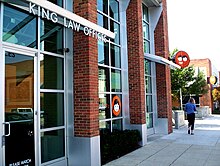
Much of the area in present-day south downtown along I-70 was at one point considered part of German Village, including the Market Exchange District, which has experienced a revival alongside German Village. [19]
German Village is bound by Pearl Street on the west; East Livingston Avenue on the north; Lathrop Street, Brust Street, Grant Avenue, Jaeger Street, and Blackberry Alley on the east; and Nursery Lane on the south. [20]
Parks and landmarks[edit]
Schiller Park, named after Johann Christoph Friedrich von Schiller (1759-1805), was once a community meeting ground for German immigrants. It is now the site of recreational facilities, gardens, and an amphitheater that hosts free live performances of Shakespearean plays during the summer months courtesy of Actors' Theatre of Columbus.[21] It is bounded by Jaeger Street and City Park, Reinhard, and Deshler Avenues. It has been the area's center for festivals and neighborhood activities since the 1800s.
The 23-acre park's main entrance, along City Park Avenue, greets visitors with the Huntington Gardens, sponsored by Huntington National Bank and maintained by volunteers, and the Schiller statue. The statue was presented to the park by local residents in 1891. It is a second casting of the statue in Munich, Germany, designed and executed by Max von Widnmann and unveiled on May 9, 1863. The Columbus statue was transported free of charge across the Atlantic. The park is also home to Umbrella Girl, dedicated to the citizens of German Village in October 1996 to replace the missing original sculpture.
The neighborhood's Stewart Alternative Elementary School, was built in 1874. It is one of the oldest remaining school buildings in Columbus, built at the same time as the First and Second Avenue Schools, also still extant.[22]
|
|
|
|
|
Shrine of the Three Kings
From Wikipedia, the free encyclopedia
The Shrine of the Three Kings[1] (German Dreikönigsschrein[2] or Der Dreikönigenschrein),[3] Tomb of the Three Kings,[4] or Tomb of the Three Magi[5] is a reliquary traditionally believed to contain the bones of the Biblical Magi, also known as the Three Kings or the Three Wise Men. The shrine is a large gilded and decorated triple sarcophagus placed above and behind the high altar of Cologne Cathedral in western Germany. Built approximately from 1180 to 1225, it is considered the high point of Mosan art and the largest reliquary in the Western world.
History[edit]

Chapel of the Magi, Cologne Cathedral, where the Shrine of the Three Kings was kept from 1322 until 1948.
The "relics of the Magi" were originally situated at Constantinople, but brought to Milan in an oxcart by Eustorgius I, the city's bishop, to whom they were entrusted by the Emperor Constantine in 314.[6] Eight centuries later in 1164, Holy Roman Emperor Frederick Barbarossa took the relics of the Magi from the church of Saint Eustorgio in Milan and gave them to the Archbishop of Cologne, Rainald of Dassel.[7] The relics have since attracted a constant stream of pilgrims to Cologne.
"In the days of Philipp of Heinsberg the shrine of the three magi was built. This was told to me by some eyewitnesses who were present when the three magi were put into the shrine." — Vita Eustorgii[8]
Parts of the shrine were designed by the famous medieval goldsmith Nicholas of Verdun,[9] who began work on it in 1180 or 1181. It has elaborate gold sculptures of the prophets and apostles, and scenes from the life of Christ. The shrine was completed circa 1225.
Around 1199, King Otto IV gave three golden crowns, purported to be made for the three wise men, as a present to the church of Cologne. Because of the importance of the shrine and the cathedral for the later development of the city, the coat of arms of Cologne still shows these three crowns symbolizing the Three Kings.
Construction of the present Cologne Cathedral begun in 1248 to house these important relics. The cathedral took 632 years to complete and is now the largest Gothic church in northern Europe.
On 20 July 1864, the shrine was opened, revealing human remains and the coins of Philip I, Archbishop of Cologne. An eyewitness report reads:
- "In a special compartment of the shrine now there showed – along with remains of ancient old rotten or moulded bandages, most likely byssus, besides pieces of aromatic resins and similar substances – numerous bones of three persons, which under the guidance of several present experts could be assembled into nearly complete bodies: the one in his early youth, the second in his early manhood, the third was rather aged. Two coins, bracteates made of silver and only one side stricken, were adjoined; one, probably from the days of Philipps von Heinsberg, displayed a church (See Note), the other showed a cross, accompanied by the sword of jurisdiction, and the crosier (bishop's crook) on either side."[10]
- Note: "Just as the coin of Philipp in Hartzheim, historia rei nummariae coloniensis Table 3 No. 14, 16, (1754),[11] yet without its circumscription; the other (coin) is in square form, showed in the center a cross, accompanied by the sword of jurisdiction, and the crosier (bishop's crook) on either side, also without transcription, most certainly it is not younger and can be assumed perhaps to turn out to be a coin by Rainald [of Dassel]."[12]
The bones were wrapped in white silk and returned to the shrine.
Description[edit]
Size and construction[edit]
The Shrine of the Three Kings is approximately 110 cm (43 in) wide, 153 cm (60 in) high, and 220 cm (87 in) long. It is shaped like a basilica: two sarcophagi stand next to each other, with the third sarcophagus resting on their roof ridges. The ends are completely covered, so there is no space visible between the sarcophagi. The basic structure is made of wood, with gold and silver overlay decorated with filigree, enamel, and over 1,000 jewels and beads. The latter include a large number of cameos and intaglio pieces, some pre-Christian.
Decoration[edit]
The entire outside of the shrine is covered with an elaborate decorative overlay. There are 74 high relief figures in silver-gilt in all, not counting smaller additional figures in the background decoration. On the sides, images of the prophets decorate the lower part, while images of the apostles and evangelists decorate the upper part. On the front end of the reliquary, there are (across the bottom, from left to right) images of the Adoration of the Magi, the Virgin Mary enthroned with the infant Jesus, and the Baptism of Christ, and above, Christ enthroned at the Last Judgment. A removable filgree panel reveals a grille displaying the names of Caspar, Melchior, and Balthasar. When the grille is removed, the skulls of the three Magi are shown wearing crowns. The other end of the reliquary shows scenes of the Passion: the scourging of Christ (lower left) and his crucifixion (lower left) with the resurrected Christ above. This end also has a bust of Rainald of Dassel in the center.
|
|
|
|
|
Cologne Cathedral – The Shrine of the Magi is the largest, most artistically significant, and, in terms of its content, most ambitious reliquary of the Middle Ages. The relics were brought to Cologne from Milan duomo in 1164. From about 1190 to 1220 a number of artisans worked on the shrine in the workshop of the goldsmith Nicholas of Verdun and in workshops in Cologne and along the river Meuse that continued his work.
|
|
|
|
|
The Strange History of Masons in America
Often the subject of conspiracy theories, Masons captured the allegiance of much of the early American elite.
Take out a dollar bill (United States currency, that is). Look at the back. On the left side, granted as much space as the American eagle symbol on the right, is a seeing eye and a pyramid, placed there for no apparent reason. But for those in the know, the eye above the pyramid is a Masonic symbol, produced by a secret society which has influenced American history from its beginnings. In Masonic lore, the pyramid symbol is known as a sign of the eye of God watching over humanity.
The Masons have been both criticized and praised for their influential role in U.S. history.
George Washington reached the top level of the Masons on August 4, 1753, securing the leadership of the influential lodge in Alexandria, Virginia. Washington was not alone among the founding founders; some scholars say as many as twenty-one signers of the Declaration of Independence were Masons. Many historians note that the Constitution and the Bill of Rights both seem to be heavily influenced by the Masonic “civil religion,” which focuses on freedom, free enterprise, and a limited role for the state.
In Europe, the Masons were known for plotting against royal governments. In America, they became known for promoting Republican virtues of self-government.
Masonic thought influenced American history: the Masons were opposed to the claims of royalty—a strong influence on the development of the American revolt against Britain which culminated in the Revolutionary War. They were also known for their opposition to the Catholic Church, another international organization that competed for allegiance.
While the Masons captured the allegiance of much of the early Republic’s elite, the group did fall under widespread suspicion.
Today’s Masonic lodges in the U.S. have a largely benign public image, seen as a place for smalltown businessmen (the order is limited to men) to engage in social gatherings, networking, and opportunities for charity. But the group, with its secret symbols and handshakes, was not always so harmless.
The United States Masons (also known as Freemasons) originated in England and became a popular association for leading colonials after the first American lodge was founded in Boston in 1733. Masonic brothers pledged to support one another and provide sanctuary if needed. The fraternity embodied European Enlightenment ideals of liberty, autonomy, and God as envisioned by Deist philosophers as a Creator who largely left humanity alone.
Those theological views created friction with established Christian churches, particularly Catholics and Lutherans. While the Masons captured the allegiance of much of the early Republic’s elite, the group did fall under widespread suspicion. The William Morgan affair of 1826—when a former Mason broke ranks and promised to expose the group’s secrets—threatened its demise. Morgan was allegedly abducted and presumed killed by Masons, and the scandal proved a low point in the public image of the fraternal order.
The anti-Mason backlash grew. Abolitionists like John Brown railed against the often pro-slavery Masons. Prominent figures including John Quincy Adams, a former president and former Mason, and publisher Horace Greeley joined in the widespread castigation. Future president Millard Fillmore called Masonic orders nothing better than “organized treason.” In 1832, an anti-Masonic party ran a one-issue candidate for president. He captured Vermont’s electoral votes.
American Masons were not above engaging in controversial foreign adventures. In 1850 a contingent of American Masons and Mexican War veterans invaded Cuba to foment a rebellion against the Spanish crown. The group failed to gain a foothold and retreated after suffering heavy casualties. Its leaders were later tried in New Orleans for violating U.S. neutrality laws.
The group’s long-term fraternalism and secrecy has traditionally served as a vehicle of exclusion, not inclusion. Today, its reputation is buttressed by an affilation with the Shriners, a related fraternal group noted for its charity and health work. The Masons’ revolutionary and sometimes violent past now serves as a kind of historic footnote as the order established itself as a placid participant in the American social fabric. Even with its controversial past, it’s hard to imagine the Masonic order serving as a contemporary hotbed of violent insurrection.
https://daily.jstor.org/the-strange-history-of-masons-in-america/ |
|
|
 Primeira Primeira
 Anterior
59 a 73 de 103
Seguinte Anterior
59 a 73 de 103
Seguinte Última
Última
|
|
| |
|
|
©2024 - Gabitos - Todos os direitos reservados | |
|
|

